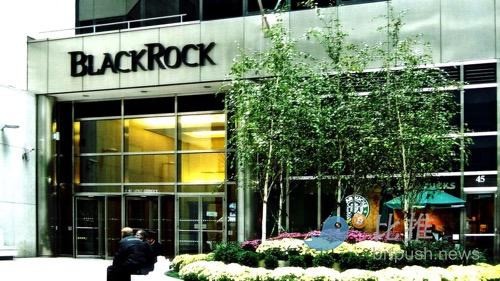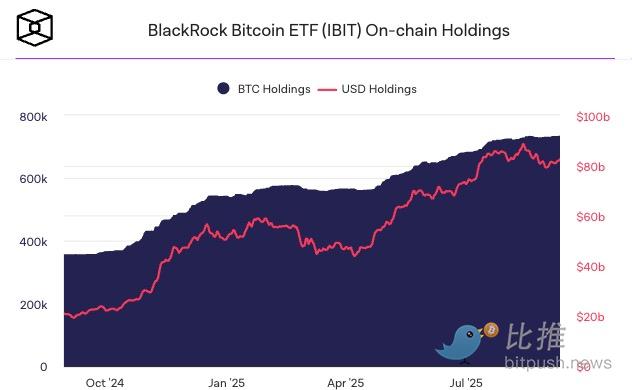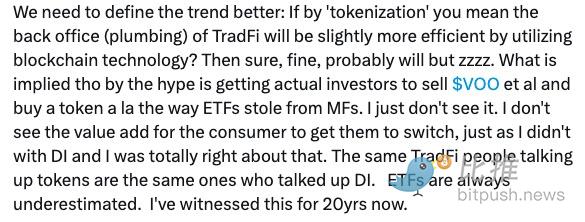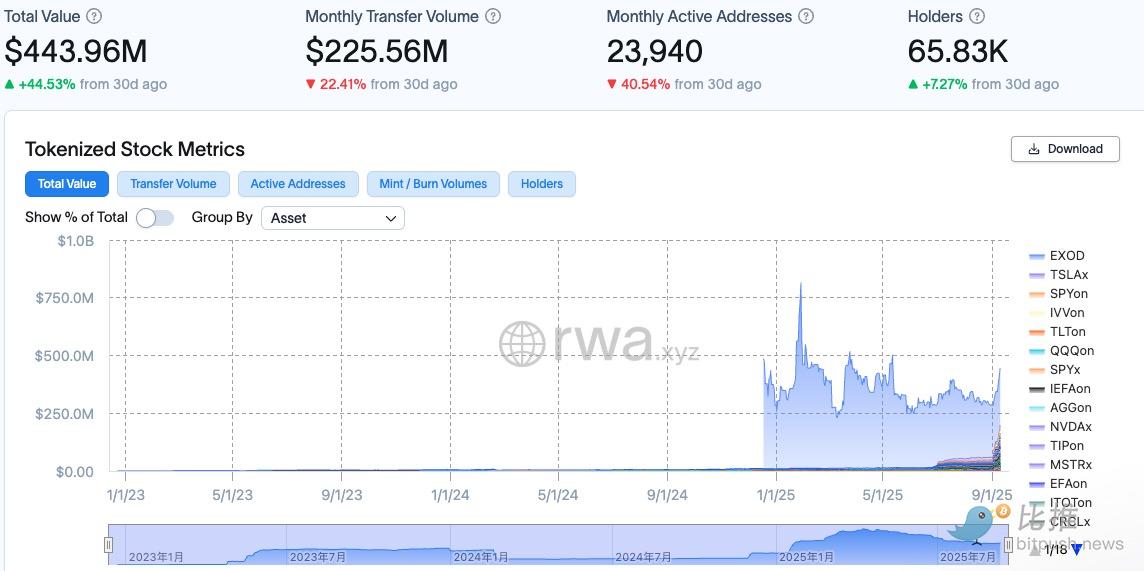X-trader NEWS
Open your markets potential
BlackRock takes action again: Following Bitcoin, it wants to bring traditional ETFs to the chain

# Written by: BitpushNews
After the successful launch of its Bitcoin spot ETF, global asset management giant BlackRock has once again turned its attention to blockchain.
According to Bloomberg, BlackRock is exploring the possibility of onboarding funds tied to Real-World Assets (RWAs)—including traditional ETFs—onto the blockchain. This news quickly sparked heated discussions in the market and thrust "asset tokenization" back into the spotlight as a key topic of debate.

This is no isolated incident. Fidelity’s tokenized money market fund (FDIT, corresponding to FYOXX) went live on Ethereum this week. Initially launched in "stealth mode" and held by institutions like Ondo, its on-chain scale has already reached hundreds of millions of US dollars. Meanwhile, Nasdaq has filed an application with the SEC, seeking approval to trade tokenized securities alongside traditional stocks on its exchange. These developments make it clear that Wall Street is witnessing a wave of "on-chain" experiments.
## BlackRock’s Crypto Landscape: From ETFs to On-Chain Funds
As the world’s largest asset manager, BlackRock has built a comprehensive presence in the crypto space:
- **Two Flagship Products**: The iShares Bitcoin Trust and iShares Ethereum Trust have attracted cumulative inflows of $55 billion and $12.7 billion, respectively—both surpassing $10 billion in assets under management (AUM) within a year. Such growth rates are extremely rare in the history of global ETF development.
- **Thematic Fund**: The iShares Blockchain and Tech ETF tracks a basket of stocks of blockchain and crypto-related technology companies, providing indirect exposure to the industry.
- **On-Chain Experiment**: Launched in 2023, the BUIDL Fund (BlackRock USD Institutional Digital Liquidity Fund) became the first tokenized fund to exceed $1 billion in AUM. By 2025, its assets had grown to over $2 billion, and it currently operates on the Ethereum blockchain.

BlackRock’s CEO Larry Fink has stated on multiple occasions: "Eventually, every financial asset will be tokenized." In his vision, blockchain will become the underlying operating system for future financial markets.
However, BlackRock’s tokenization attempts are still in the exploratory phase. Whether scaling up the BUIDL Fund or further onboarding traditional ETFs onto the blockchain, a core prerequisite remains unfulfilled: regulatory approval. Currently, the U.S. Securities and Exchange Commission (SEC) has not yet established a clear framework, and there are also divisions among market participants regarding the significance and prospects of tokenization.
## Skeptics: Traditional ETFs Are Sufficient
Some argue that tokenization does not bring additional value to end investors. Eric Balchunas, a Bloomberg ETF analyst, points out: "ETFs themselves are already low-cost, highly liquid, and low-barrier products—there is hardly any reason for them to be replaced."

What’s more, the current tokenized stock market remains relatively niche. According to data from RWA.xyz, the total scale of on-chain tokenized U.S. stocks (such as TSLA and AAPL) is less than $500 million, a fraction of the ETF market’s multi-trillion-dollar size. Even though platforms like Robinhood and Kraken have launched tokenized stock trading, such products are still limited to crypto-native users.

In the view of these skeptics, while tokenization may improve back-office efficiency, it barely impacts the investor experience. It is even less likely to disrupt the market again in the way ETFs once replaced mutual funds.
## Institutionalists: A "Transitional Solution"
Dave Nadig, an ETF research expert, emphasizes that current ETFs and tokenized stocks are more like "packaging layers"—a form of "transitional solution" based on the existing financial system.
To put it simply:
- **It Is Not a True Revolution**: Current practices (such as converting stocks into tokens) do not fundamentally transform the traditional financial system. They merely add a layer on top of the existing system, wrapping stocks in a new "package"—tokens. The core of this package—the stocks themselves—still operates under the rules of traditional finance.
- **True Tokenization Requires Legal Reform**: In Dave Nadig’s view, true tokenization means assets are fundamentally created, traded, and settled on the blockchain, no longer relying on traditional brokers and clearinghouses. However, this kind of genuine transformation can never be achieved without rewriting laws and full regulatory coordination.
In short, the "tokenized stocks" currently being discussed are nothing more than a "superficial" improvement to the old system. A true financial revolution would require a complete overhaul at the legal and regulatory levels. Existing securities laws and clearing rules do not allow for full on-chain replacement; the SEC has not yet clarified a compliance framework for tokenized securities; and traditional finance’s reliance on clearinghouses and custodians makes rapid replacement difficult.
This means that unless large-scale legal rewrites occur, tokenization will remain superficial and unable to achieve a restructuring of the financial system.
## Practitioners: Expanding the Boundaries of ETFs
Practitioners focus on "incremental users" and "new use cases." Iandebode, CEO of Ondo Finance, emphasizes that the value of tokenization does not lie in replacing ETFs, but in expanding their use scenarios and user base.
- **Accessibility**: Hundreds of millions of people worldwide are still unable to directly purchase index funds like VOO due to geographical restrictions, capital account controls, or investment thresholds. Tokenization allows them to access these assets on the blockchain.
- **Usability**: Tokenized ETFs are not just for "buy-and-hold" purposes—they can also be directly used as on-chain assets to participate in DeFi activities, such as collateralized lending, joining liquidity pools, and deploying automated strategies.
Such designs are similar to Fidelity’s on-chain money market fund or Kraken’s tokenized stocks: they do not disrupt existing products but instead endow assets with greater liquidity and composability. Thus, tokenization will become a "second growth curve" for ETFs—not a replacement, but an expansion.
Amid these divergences, BlackRock’s layout stands out as particularly crucial. It represents the exploration of the world’s largest asset manager and may serve as a model for the integration of Wall Street and the crypto world.
In the short term, tokenization can hardly compare to the multi-trillion-dollar ETF market. However, in the long run, as more institutions enter the space and regulatory frameworks gradually take shape, this experiment may truly move from the margins to the core—even reshaping the underlying logic of financial markets. Is BlackRock’s move just "old wine in a new bottle," or the prologue to a "great financial migration"? The answer may gradually unfold.
## Disclaimer
The views expressed in this article are solely those of the author and do not constitute investment advice on this platform. This platform makes no guarantees regarding the accuracy, completeness, originality, or timeliness of the information contained in the article, nor shall it be liable for any losses arising from the use of or reliance on such information.
Contact: Sarah
Phone: +1 6269975768
Tel: +1 6269975768
Email: xttrader777@gmail.com
Add: Lee Garden One, 33 Hysan Avenue, Causeway Bay, Hong Kong.